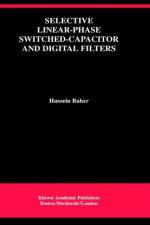|
This section contains 359 words (approx. 2 pages at 300 words per page) |
Both resistors and capacitors are found and used in virtually every electronic device currently made. The uses to which they are put vary from circuit to circuit; however, the functioning of a resistor or capacitor remains the same regardless of its location in any particular circuit.
A resistor impedes the flow of current through the wires that are connected to them. A resistor is a physical embodiment of Ohm's Law, which states that the current through any portion of a circuit is directly proportional to the voltage applied to that segment. Resistance in any circuit can manifest as a heating of the resistive component. Examples of this range from a resistor in a circuit to the toaster you use in your kitchen. The toaster elements that get red hot do so because they are actually resistors. They impede the current that passes through them, and as they do this they get hot.
While resistors merely impede the flow of current through a section of a circuit, capacitors block it completely. A capacitor device usually consists of two electrical leads separated by an insulator, a nonconducting material. The insulator prevents electrons from traveling between the two leads. Because of the blocking property of capacitors, they are often used to eliminate direct current electricity (DC) from entering a circuit where it would be harmful.
More often, however, capacitors are used for their primary feature, the storing of electrical charge. As long as a voltage is applied to the capacitor, the charge continues to build up to some final maximum value. Once the voltage is removed, however, the charge bleeds away. This property makes capacitors valuable in ensuring a continuous, uninterrupted power supply. The addition of a capacitor will enable short disruptions in the power supply to be ignored because the capacitor will pick up the slack during the outage. The capacitor can also be used to double the available voltage applied to a circuit for short periods. Once the capacitor is charged, the charge can be released in conjunction with the standard power supply in order to increase the output voltage.
|
This section contains 359 words (approx. 2 pages at 300 words per page) |


